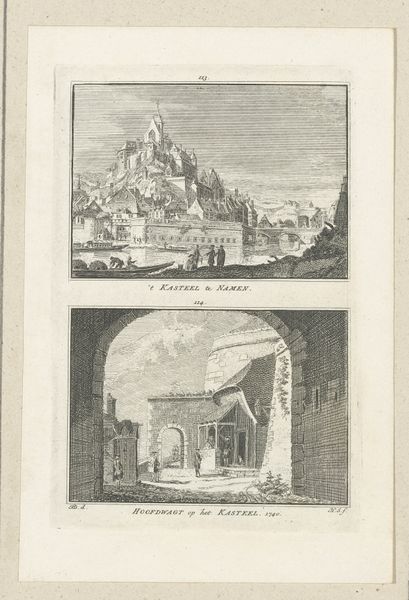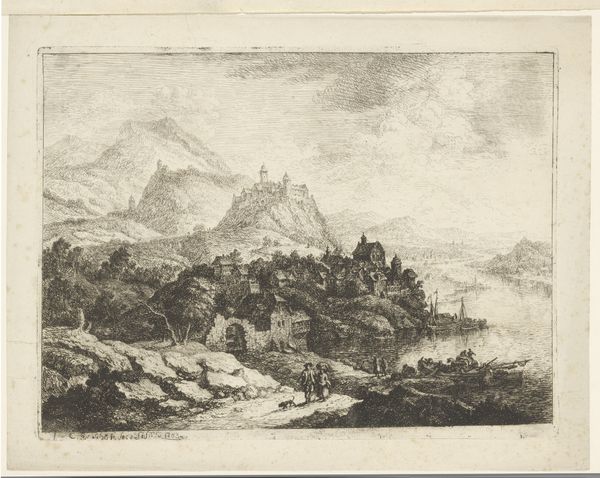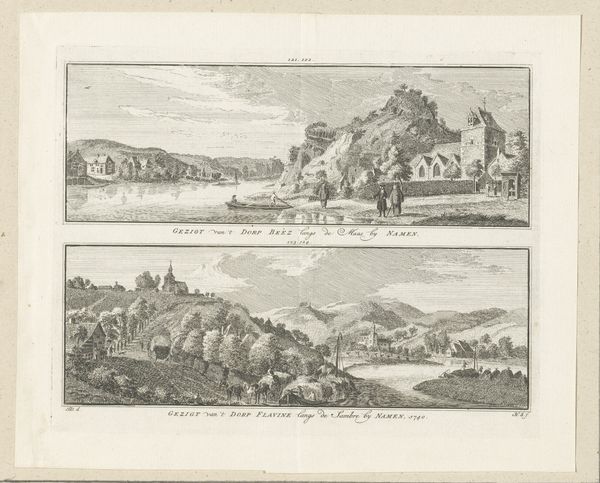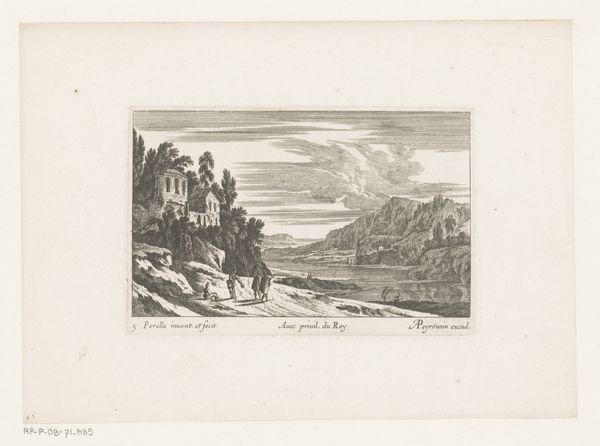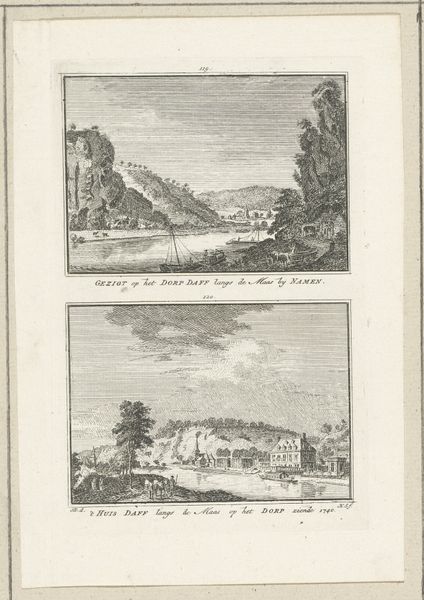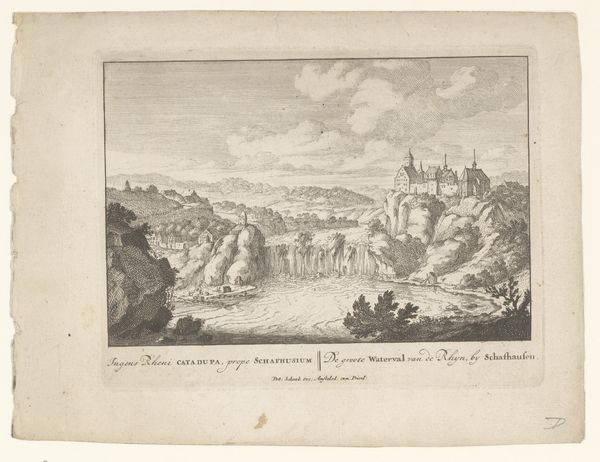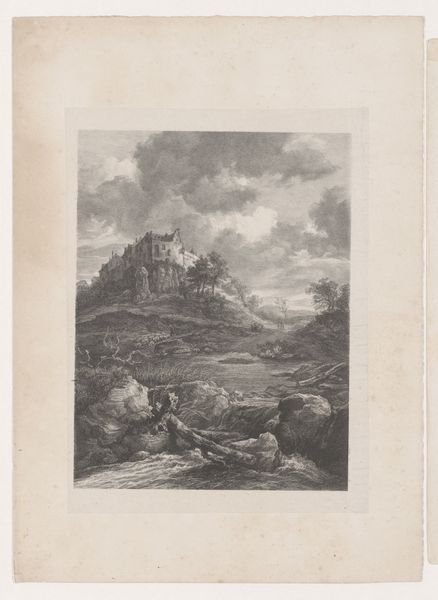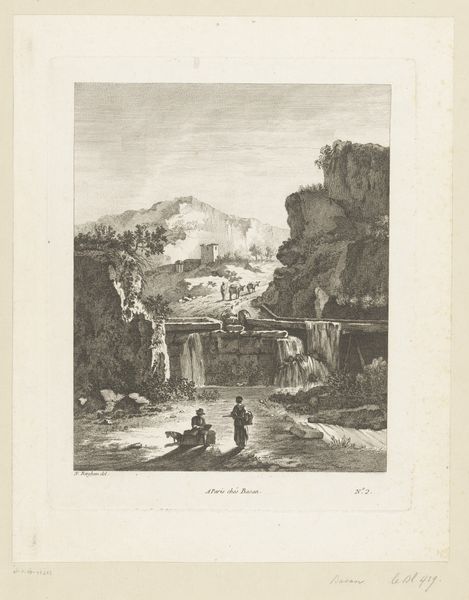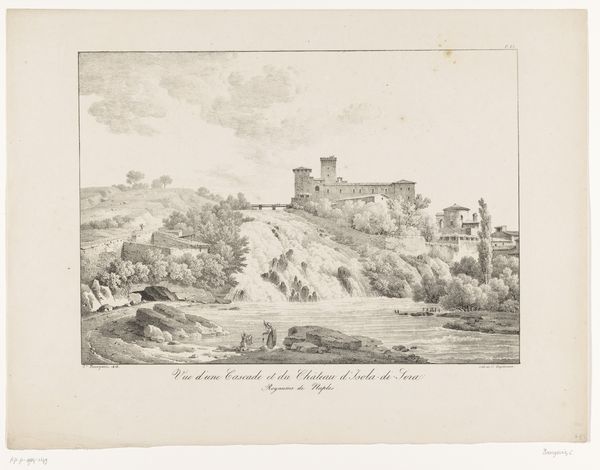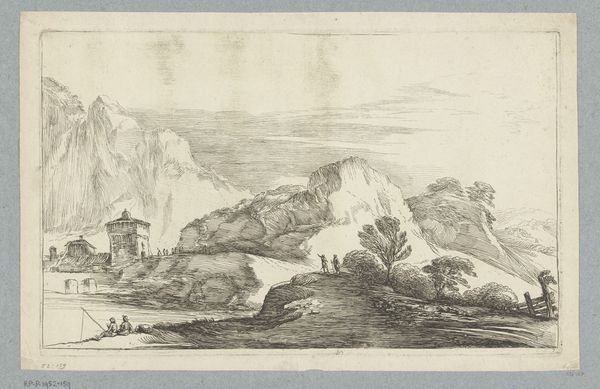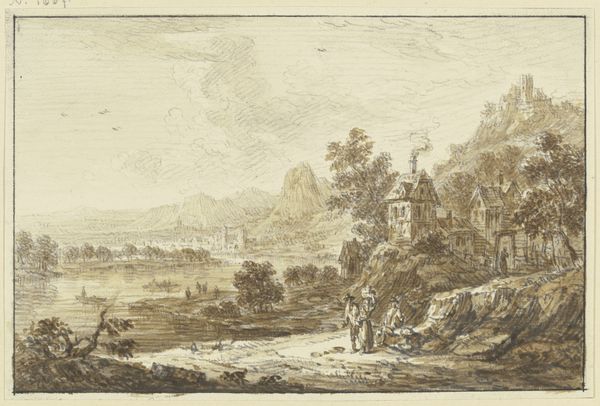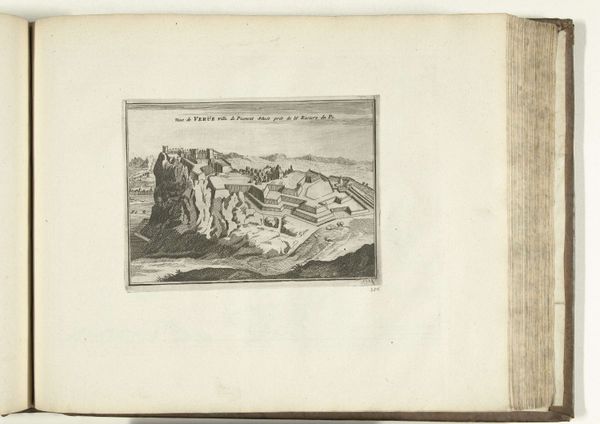
Gezicht op de ingang van de Sint-Pietersberg en gezicht op de Sint-Pietersberg, bij Maastricht 1746 - 1792
0:00
0:00
Dimensions: height 167 mm, width 112 mm
Copyright: Rijks Museum: Open Domain
Editor: This print by Hendrik Spilman, "Gezicht op de ingang van de Sint-Pietersberg en gezicht op de Sint-Pietersberg, bij Maastricht", dating from 1746 to 1792, presents two landscape views in incredible detail for an engraving. The top image, in particular, has a certain… weight. What do you see in this piece? Curator: These landscapes are imbued with a sense of cultural memory, wouldn’t you agree? Think about how the image functions as a marker of place and identity. Notice how the solid structure, the "entrance," anchors the image, almost guarding a psychological passage into history. And the cave openings— don't they remind you of mouths or eyes peering out from the earth itself? Editor: I do see that! It’s like the mountain is a sentinel, watching over the town. But why present two images? Curator: The diptych, or two-part image, amplifies the symbolic significance. The top view is framed with human artifice while the bottom reveals nature as an active agent and implies human intervention on nature. The road is on display and the people traveling become less important than the location. Both explore ideas about journeys, both physical and perhaps spiritual, to an important site of faith. Editor: So, it’s about pilgrimage, in a way? Capturing not just the mountain but its significance? Curator: Precisely. Spilman's image captures the emotional and cultural resonance of a landscape that has been charged with meaning over centuries, which reveals much about our relationship with the land itself. Editor: I never considered landscape as having such symbolic depth. Thank you. Curator: My pleasure. There’s always a rich symbolic tapestry beneath what meets the eye!
Comments
No comments
Be the first to comment and join the conversation on the ultimate creative platform.
